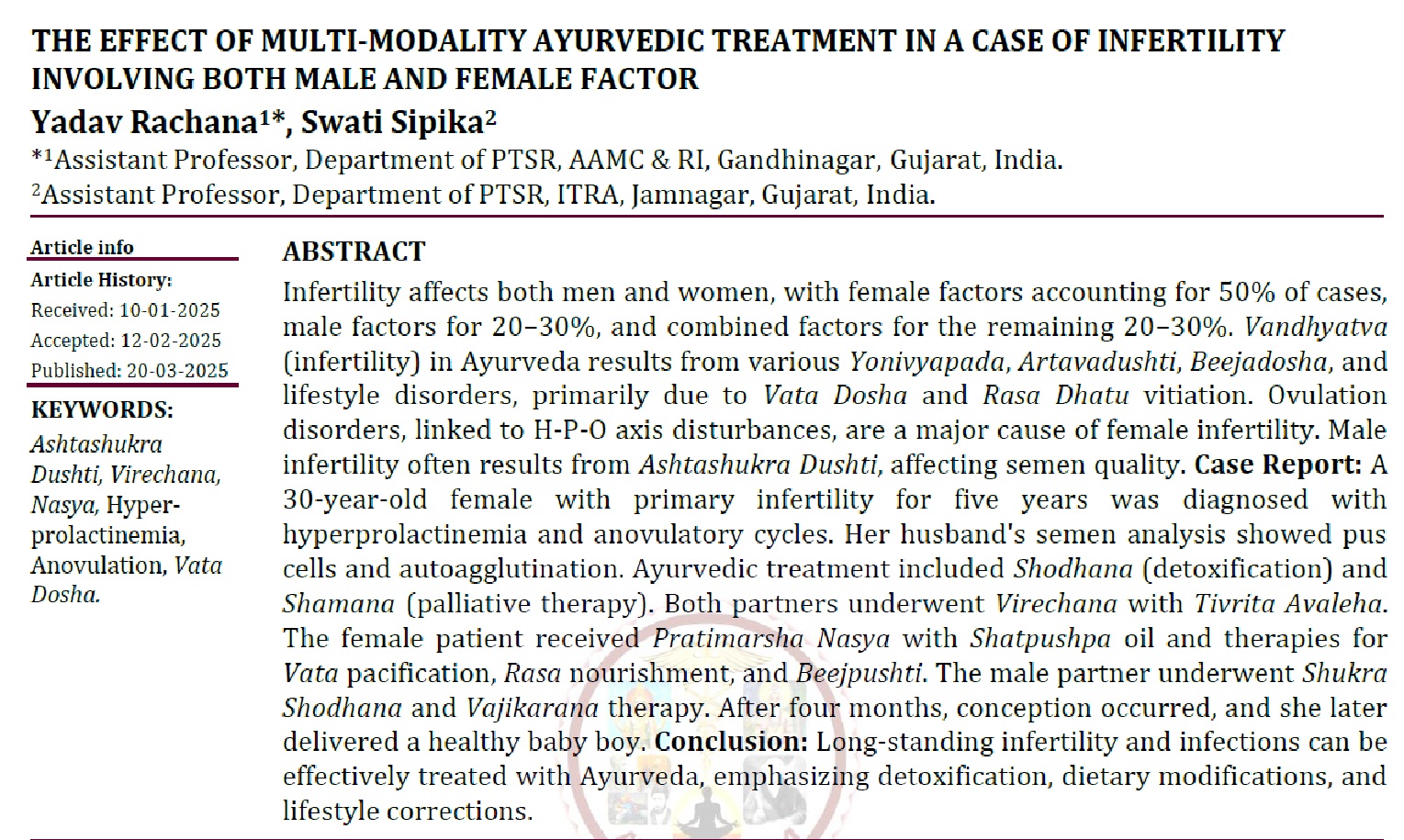The Effect of Multi-Modality Ayurvedic Treatment in A Case of Infertility Involving Both Male and Female Factor
DOI:
https://doi.org/10.47070/ayushdhara.v12i1.1893Keywords:
Ashtashukra Dushti, Virechana, Nasya, Hyper-prolactinemia, Anovulation, Vata DoshaAbstract
Infertility affects both men and women, with female factors accounting for 50% of cases, male factors for 20–30%, and combined factors for the remaining 20–30%. Vandhyatva (infertility) in Ayurveda results from various Yonivyapada, Artavadushti, Beejadosha, and lifestyle disorders, primarily due to Vata Dosha and Rasa Dhatu vitiation. Ovulation disorders, linked to H-P-O axis disturbances, are a major cause of female infertility. Male infertility often results from Ashtashukra Dushti, affecting semen quality. Case Report: A 30-year-old female with primary infertility for five years was diagnosed with hyperprolactinemia and anovulatory cycles. Her husband's semen analysis showed pus cells and autoagglutination. Ayurvedic treatment included Shodhana (detoxification) and Shamana (palliative therapy). Both partners underwent Virechana with Tivrita Avaleha. The female patient received Pratimarsha Nasya with Shatpushpa oil and therapies for Vata pacification, Rasa nourishment, and Beejpushti. The male partner underwent Shukra Shodhana and Vajikarana therapy. After four months, conception occurred, and she later delivered a healthy baby boy. Conclusion: Long-standing infertility and infections can be effectively treated with Ayurveda, emphasizing detoxification, dietary modifications, and lifestyle corrections.
Downloads

Downloads
Published
Issue
Section
License
Copyright (c) 2025 AYUSHDHARA

This work is licensed under a Creative Commons Attribution-NonCommercial-ShareAlike 4.0 International License.


